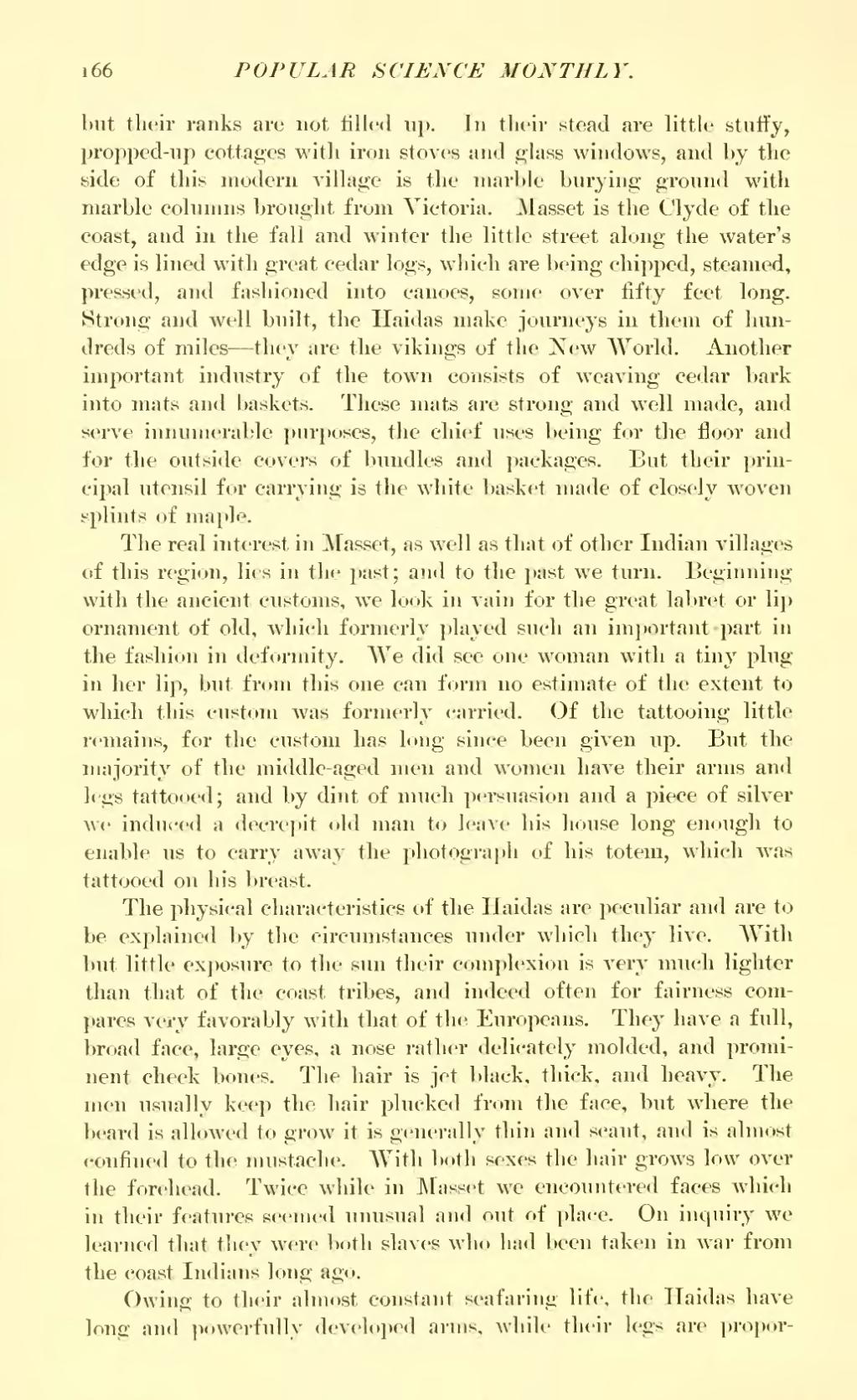but their ranks are not filled up. In their stead are little stuffy, propped-up cottages with iron stoves and glass windows, and by the side of this modern village is the marble burying ground with marble columns brought from Victoria. Masset is the Clyde of the coast, and in the fall and winter the little street along the water's edge is lined with great cedar logs, which are being chipped, steamed, pressed, and fashioned into canoes, some over fifty feet long. Strong and well built, the Haidas make journeys in them of hundreds of miles—they are the vikings of the New World. Another important industry of the town consists of weaving cedar bark into mats and baskets. These mats are strong and well made, and serve innumerable purposes, the chief uses being for the floor and for the outside covers of bundles and packages. But their principal utensil for carrying is the white basket made of closely woven splints of maple.
The real interest in Masset, as well as that of other Indian villages of this region, lies in the past; and to the past we turn. Beginning with the ancient customs, we look in vain for the great labret or lip ornament of old, which formerly played such an important part in the fashion in deformity. We did see one woman with a tiny plug in her lip, but from this one can form no estimate of the extent to which this custom was formerly carried. Of the tattooing little remains, for the custom has long since been given up. But the majority of the middle-aged men and women have their arms and legs tattooed; and by dint of much persuasion and a piece of silver we induced a decrepit old man to leave his house long enough to enable us to carry away the photograph of his totem, which was tattooed on his breast.
The physical characteristics of the Haidas are peculiar and are to be explained by the circumstances under which they live. With but little exposure to the sun their complexion is very much lighter than that of the coast tribes, and indeed often for fairness compares very favorably with that of the Europeans. They have a full, broad face, large eyes, a nose rather delicately molded, and prominent cheek bones. The hair is jet black, thick, and heavy. The men usually keep the hair plucked from the face, but where the beard is allowed to grow it is generally thin and scant, and is almost confined to the mustache. With both sexes the hair grows low over the forehead. Twice while in Masset we encountered faces which in their features seemed unusual and out of place. On inquiry we learned that they were both slaves who had been taken in war from the coast Indians long ago.
Owing to their almost constant seafaring life, the Haidas have long and powerfully developed arms, while their legs are propor-
